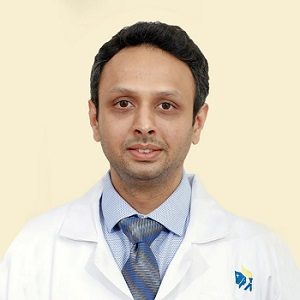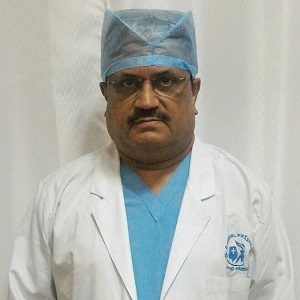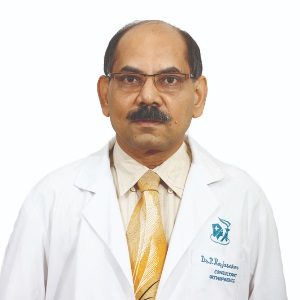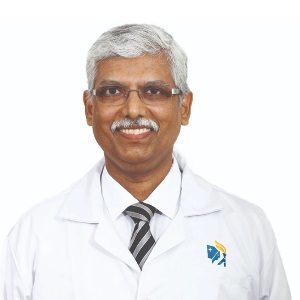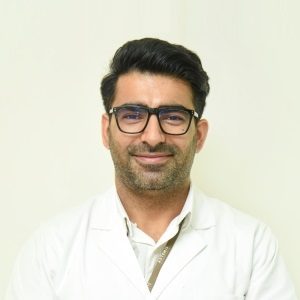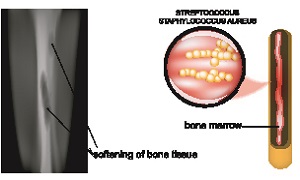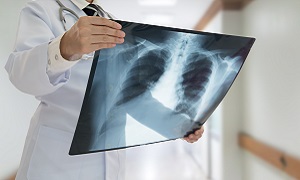Best Doctors in India for Osteomyelitis Treatment
- Orthopedic Surgeon, Chennai, India
- Over 12 years’ experience
Profile Highlights:
- Dr. Kunal Patel consults on Orthopedics related problems at the Apollo hospitals of Chennai.
- He was part of the team which set Limca’s World record of Highest Joint Replacement Surgeries in March 2015.
- Dr. Kunal Patel is well-trained in Asia’s first and only Brainlab Arthroplasty Computer Navigation Orthopedic suite and has completed several fellowships related to his field.
- Orthopedic Surgeon and Spine Surgeon, Chennai, India
- Over 12 years’ experience
Profile Highlights:
- Dr. Madhu Kiran Yarlagadda is an orthopedics – consultant specializing in Joint and spine surgery and works at the Apollo hospitals of Chennai.
- Dr. Madhu Kiran Yarlagadda’s team carried out Robotic Spine Surgery for the first time in South-East Asia and performed Endoscopic Transforaminal Spine Surgery in Chennai.
- He treats spine diseases and has the facilities and expertise to perform robotic spine surgery. Along with that, he treats patients with joint and other orthopedic issues.
- Orthopedic Surgeon, Chennai, India
- Over 16 years’ experience
Profile Highlights:
- Dr. Arun Kannan is a well-known joint replacement surgeon at the Apollo Hospitals, Chennai.
- In his 16 years of experience doing joint surgeries and treating orthopedic issues, Dr. Arun Kannan has worked in the US as well as India and has gained enough trust and recognition from his patients.
- He has been excellent in his academics as well as practice because of which he received prizes and appreciation in both.
- Orthopedic Surgeon, Chennai, India
- Over 40 years’ experience
Profile Highlights:
- An Orthopedic doctor by profile, Dr. Gopala Krishnan has around 40 years of experience in his field.
- After his initial studies in medicine in Chennai, Dr. Gopala Krishnan moved to the US to pursue M.Ch in Orthopedics in 1984.
- His experience and dedication have helped him gain recognition in the field and build trust among patients.
- Orthopedic Surgeon, Chennai, India
- Over 24 years’ experience
Profile Highlights:
- Dr. Rajasekar P is an experienced orthopedist with 24+ years of experience.
- He treats and consults patients with problems with Joints, fractures, osteoporosis, Spine injuries, etc.
- He is an MBBS and DNB qualified doctor and practices at Apollo hospitals of Chennai.
- Orthopedic Surgeon, Chennai, India
- Over 50 years’ experience
Profile Highlights:
- Dr. Uma Chandran S specializes in orthopedics and is a veteran surgeon at Apollo Hospitals of Chennai.
- He has spent more than 50 years in the field of orthopedics and is believed to be one of the best orthopedists in Chennai.
- He is also known for his expertise in bone replacement surgery, spine movement, fracture treatment, etc.
- Spine Surgeon and Orthopaedic Surgeon, Chennai, India
- Over 18 years’ experience
Profile Highlights:
- Dr. Muralidharan Venkatesan is a consultant in spine surgery from Chennai.
- He provides comprehensive cervical (neck), thoracic (upper back), and lumbosacral (lower back) conditions treatment.
- Dr. Venkatesan pursued MBBS, MRCS, and a fellowship FRCS and shifted his specialization to spinal surgery.
- Dr. Venkatesan has his papers published in several journals.
- Orthopedic Surgeon and Spine Surgeon, Chennai, India
- Over 23 years’ experience
Profile Highlights:
- Dr. Ravi Venkatesan is a spine surgery specialist from Chennai, Tamil Nadu.
- His experience in spine surgery, orthopedics, and spine deformity surgery date back nearly 23 years.
- Dr. Venkatesan has performed several surgeries and has been an active member of various orthopedics groups.
- Many organizations have recognized his service and have awarded him for his dedication.
- Orthopedic Surgeon, Gurugram, India
- Over 10 years’ experience
Profile Highlights:
- Irfan Banday is a brilliant young orthopedic surgeon with over 10 years of experience handling trauma surgeries and ortho problems.
- Irfan received Fellowship in Knee Arthroscopy and Arthroplasty and Shoulder and Upper Limb Arthroscopy, Arthroplasty & Reconstructive Surgery.
- He manages simple & complex fractures, Reconstructive Surgeries of the Knee, Shoulder, Upper limb, and complex tendon transfers.
- Orthopedic Surgeon, Gurugram, India
- Over 18 years’ experience
Profile Highlights:
- Sandeep Chauhan is one of the best orthopedic surgeons and an expert in managing complex fractures, even in children, soft tissue injuries, septic arthritis, and osteomyelitis.
- He performs fracture reconstructions; and arthroplasty procedures like surface replacements, cemented and un-cemented THR, Total Knee Replacement, musculoskeletal infections, UKA knee, hip, shoulder, & elbow replacements.
Best Hospitals in India for Osteomyelitis Treatment
Osteomyelitis
Osteomyelitis is an infection in a bone, which is rare but can be quite serious. Infections reach a bone by spreading from nearby tissue or by traveling through the bloodstream. Infections can also begin in the bone itself, if due to an injury the bone is exposed to germs.
Smokers and people who are suffering from chronic health conditions, like diabetes or kidney failure, are generally more at risk of developing this condition. People having diabetes may develop osteomyelitis in their feet if they have foot ulcers.
Although this condition was once considered incurable, due to advances in modern science and medicine, it can be successfully treated now.
Symptoms
If you are having osteomyelitis, you might show the following signs and symptoms:
- Fever
- Pain in the area of the infection
- Fatigue
- Swelling, warmth, and redness over the area of the infection
Sometimes osteomyelitis doesn’t cause any signs or symptoms or in some cases, they may be hard to distinguish from other problems. This can be true for infants, older adults as well as people with compromised immune systems.
If you ever experience worsening bone pain along with fever, you should see your doctor. If you’re at a risk of infection because of any medical condition or an injury, or recent surgery, you should see your doctor immediately if you notice any signs and symptoms of an infection.
Causes & risk factors
In most cases, a bacteria which is known as Staphylococcus auerus, a type of staph bacteria is known to be the cause of this condition.
Certain chronic conditions such as diabetes can also increase your risk of osteomyelitis.
This condition occurs in only 2 out of every 10,000 people. The condition can affect children as well as adults, although in different ways. Certain conditions or behaviors that can cause the immune system to weaken, can increase the risk of osteomyelitis. These include the following:
- Diabetes
- Sickle cell disease
- Alcoholism
- Long-term use of steroids
- Poor blood supply
- Recent injury
- HIV or AIDS
- Rheumatoid arthritis
- Intravenous drug use
- Hemodialysis
Bone surgery, which includes hip or knee replacements, can also increase the chances of bone infection.
Diagnosis
Your doctor will first likely feel the area around the affected bone for any tenderness, warmth, or swelling. If you are having a foot ulcer, your doctor might use a dull probe in order to determine the proximity of the underlying bone.
Your doctor might also order a combination of tests and procedures in order to diagnose osteomyelitis as well as to determine exactly which germ is causing the infection. Some other tests can include the following:
Blood tests
Blood tests might also reveal any elevated levels of white blood cells as well as other factors which can indicate that your body is combating an infection. If your osteomyelitis is the result of any infection in the blood, tests may reveal which germs are causing it.
However, a blood test will not tell your doctor whether you do or don’t have osteomyelitis. Though, it can give clues to help your doctor decide what additional tests and procedures you are going to require.
Imaging tests
X-rays
Magnetic resonance imaging (MRI)
Computerized tomography (CT)
Bone biopsy
A bone biopsy can help to reveal what type of germ has infected your bone. Knowing the type of germ can help your doctor in choosing an antibiotic that works particularly for that type of infection.
An open biopsy will require anesthesia as well as surgery for accessing the bone. In certain situations, a surgeon may insert a long needle through your skin and into your bone in order to take a biopsy. This procedure will require local anesthetics in order to numb the area where the needle will be inserted. X-ray or other imaging scans might also be used for proper guidance.
Treatment
In many cases, antibiotics and pain medications are able to treat osteomyelitis effectively. If a doctor obtains a biopsy, this will also aid in guiding the choice of the best antibiotic. The duration of treatment of this condition with antibiotics is generally four to eight weeks though it varies with the type of infection as well as the response to the treatments. In few cases, the doctor will need to immobilize an affected area using a brace in order to prevent any pain and speed up the treatment.
Sometimes surgery can become necessary. If there is an area of localized bacteria or joint infection, your doctor might need to open, wash as well as drain it. If there is damaged soft tissue or bone, it might require to be removed as well. If bone removal becomes necessary, it might need to be replaced with a bone graft.
Complications
Complications of this condition can include the following:
- Bone death (osteonecrosis)- An infection in your bone may impede blood circulation within the bone, which might eventually result in bone death. Areas of the body where the bone has died can require surgical removal for any antibiotics to be effective.
- Skin cancer– If your osteomyelitis leads to an open sore that is draining pus, then its surrounding skin is at a higher risk of developing squamous cell cancer.
- Septic arthritis- Sometimes, infection within bones may also spread into any nearby joint.
- Impaired growth- Normal growth in bones or joints in children can get affected if the condition occurs in the softer areas, which are termed as growth plates, at either end of the long bones of the arms and legs.
Prevention
The best way to prevent this condition is cleanliness and tidiness. If you or your child is having a cut, especially a deep cut, it is important to wash it completely. Flush out any open wound under running water for a minimum of five minutes, after which you will need to bandage it in sterile bandages.
If you suffer from chronic osteomyelitis, then it is important to make sure your doctor is aware of your medical history. This will help you work together to keep the condition under control. If you are suffering from diabetes, then you will need to pay close attention to your feet and contact your doctor at the first sign of any infection.

